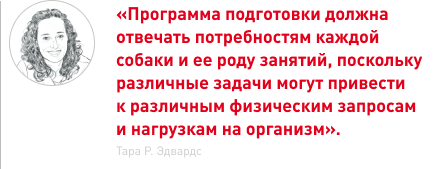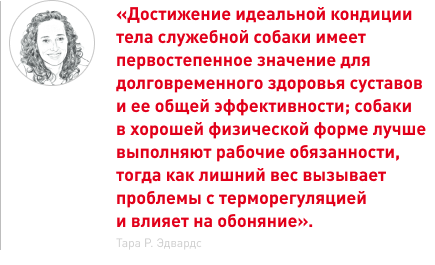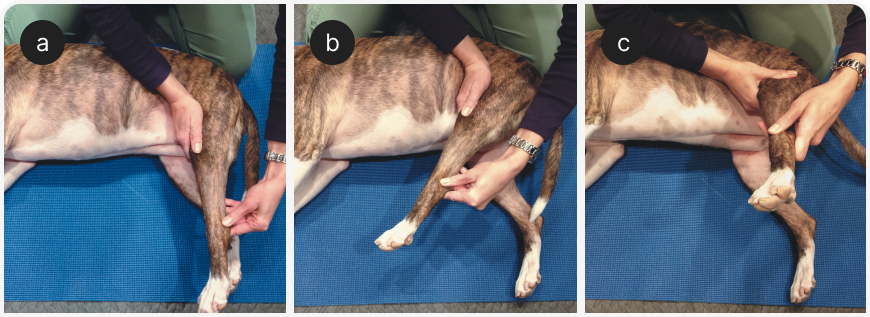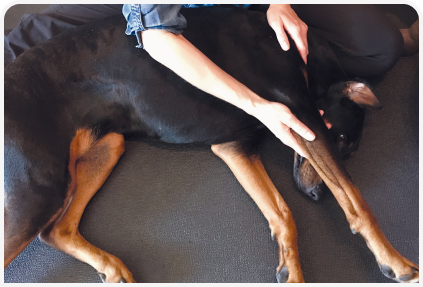Введение
В 2016 году мы простились с последней служебной собакой из тех, что принимали участие в спасательных операциях после теракта 11 сентября. В такие моменты мы понимаем, как сильно полагаемся на этих героев, которые служат нам верой и правдой. Служебные собаки (или К-9) участвуют в поисково-спасательных операциях, охране правопорядка, военных действиях и других мероприятиях по обеспечению безопасности; в Северной Америке они служат в Федеральном бюро расследований, Управлении таможенной и пограничной охраны, Администрации транспортной безопасности, Вооруженных силах и Министерстве национальной обороны Канады.
Служебные обязанности таких собак разнообразны (Рисунок 1): патрулирование, розыск, обнаружение (взрывчатые вещества, огнестрельное оружие, боеприпасы, наркотики и трупы), задержание, а также участие в операциях по поиску пропавших людей и ликвидации последствий катастроф с большим числом пострадавших. Служебные собаки – бесценные члены огромной команды, они играют важную роль в защите и обеспечении безопасности людей. Они ежедневно выполняют сложные задачи и всегда готовы к работе в условиях высокого риска, поэтому их безопасность, профилактика травм и обеспечение долгой жизни в профессии — основные цели профилактической ветеринарной медицины.
.png)
Основные заболевания и несчастные случаи на службе
Для выполнения разных заданий привлекаются собаки различных размеров и внешнего вида, некоторые породы (из-за типа телосложения) лучше подходят для решения определенных задач. К самым распространенным служебным породам относят (но не ограничиваются только ими) немецких овчарок, бельгийских овчарок малинуа (Рисунок 2), лабрадор-ретриверов, ротвейлеров и биглей. Но это может повлечь за собой проблемы.
У представителей этих пород часто встречаются такие наследственные заболевания, как дисплазия локтевого или тазобедренного сустава, дегенеративные изменения межпозвоночных дисков, вывих коленной чашечки, разрыв передней крестовидной связки (1). В рамках одного исследования была рассмотрена частота возникновения заболеваний опорно-двигательного аппарата у рабочих и служебных собак и были получены ошеломляющие результаты: у 41% животных было выявлено первичное ортопедическое заболевание (2).
Следует учитывать и рабочие риски. Собаки, участвующие в ликвидации последствий катастроф, часто страдают от обезвоживания или нарушений работы желудочно-кишечного тракта, поисковые собаки получают травмы при контакте с различными поверхностями (раны, ссадины, повреждения лап, подушечек и когтей) (3, 4) (Рисунок 3). Собаки, которые служат в Вооруженных силах и органах правопорядка, подвержены эмоциональному стрессу, могут пострадать от применения оружия в связи с выполнением служебной задачи.
.png)
.png)
Травмы
Специалисты, работающие со служебными собаками, должны владеть не только навыками экстренной помощи, но и уметь справляться с другими проблемами. Наряду с основными ортопедическими заболеваниями, до 14% небоевых травм у служебных собак затрагивают опорно-двигательный аппарат (5), что может в будущем повлиять на рабочие качества животного и срок его службы. Например, согласно результатам ретроспективных опросов спортсменов аджилити, около 30% собак получали как минимум одну травму, связанную со спортивной деятельностью (6, 7), причем отмечались случаи, когда причинами повреждений были неправильное взаимодействие с предметами и неконтролируемые движения (повороты, изгибы, поскальзывания, падения). В их числе немало травм мягких тканей, которые в основном затрагивают плечи, спину и шею, большинство из них — результат хронических и повторяющихся перегрузок.
Служебным собакам приходится работать в нестандартных условиях на пересеченной местности с различными препятствиями и, как правило, быстро бегать, поэтому можно ожидать, что, так же как и собаки-спортсмены, они могут получать травмы из-за хронических перегрузок.

Существует ряд повреждений, которые часто встречаются у служебных собак.
Травмы запястья
Из-за необходимости часто прыгать дополнительная нагрузка ложится на запястные и плечевые суставы. Перерастяжение запястья обычно травматично, оно возникает вследствие прыжков с высоты или работы на неровной поверхности. Запястье — сложная структура, стабильность которой обеспечивают связки, сухожилия и волокнистая хрящевая ткань. Регулярные частые прыжки повышают риск разрушения этих поддерживающих структур. Таким образом, может быть полезно внедрить в практику постоянный контроль выхода собак из служебного транспорта.
Фиброзная миопатия
Это единственное повреждение мягких тканей, вызывающее биомеханическую хромоту, которая затрагивает задние конечности. Этому заболеванию более других подвержены активные рабочие овчарки. Согласно статистике, 90% собак с фиброзной миопатией — это немецкие или бельгийские овчарки, приблизительно 40% из них заняты в охране правопорядка (8). При развитии этого заболевания нормальная мышечная ткань замещается фиброзной неэластичной соединительной тканью. Процесс преимущественно затрагивает стройную и полусухожильную мышцы, расположенные в задней части бедра и имеющие схожие анатомические черты (Таблица 1).
.png)
В результате мышцы укорачиваются, и из-за неспособности вытянуть коленный сустав наступает механическая хромота. Хронические незначительные микроповреждения мышечных волокон, вызванные чрезмерными или слишком резкими нагрузками, могут запустить фиброзный процесс. В настоящее время высокоэффективные методики лечения и профилактики неизвестны, однако тот факт, что возможной причиной этого заболевания являются регулярные повреждения мышц, позволяет предположить, что специальная программа растяжки снизит уровень распространенности фиброзной миопатии. Регулярные проверки состояния мышц и связок могут способствовать раннему обнаружению и, возможно, более успешному лечению в будущем.
Заболевания пояснично-крестцового отдела позвоночника
Рост числа случаев дегенеративного пояснично-крестцового стеноза у служебных собак вызывает беспокойство, поскольку негативно влияет не только на длительность карьеры, но и на качество и продолжительность жизни. В рамках одного исследования были изучены истории болезни 927 служебных собак. Оказалось, что дегенеративные заболевания суставов (19,2%) и болезни спинного мозга / синдром конского хвоста (15,6%) стали частыми поводами для эвтаназии (9), тогда как согласно результатам другой научной работы 30% военных служебных собак страдают от заболеваний спинного мозга, и это было частой причиной оставления службы (10).
Нагрузки на позвоночник, вызванные физической активностью, вкупе с обусловленными породой особенностями строения могут стать причиной изменений в пояснично-крестцовом отделе и привести к развитию дегенеративного пояснично-крестцового стеноза, что в свою очередь повлияет на биомеханику, вызовет невралгию или нейропатическую боль, а также неврологическую дисфункцию (11) (Рисунок 4).
.png)
Программы подготовки
Особое внимание в спортивных дисциплинах с собаками и ветеринарной спортивной медицине уделяется концепции предотвращения травм. Важно избегать возникновения проблем со здоровьем у служебных собак, поскольку травмы влияют на рабочие качества и могут стать причиной раннего ухода со службы. Многих собак отобрали потому, что их телосложение и поведенческие характеристики позволяют им эффективно и оперативно выполнять возложенные на них обязанности. Наша задача — с помощью физической подготовки улучшить их работоспособность и помочь избежать травм.
Для командного взаимодействия хорошая физическая подготовка требуется обоим участникам процесса – и человеку, и собаке. Программа тренировки имеет много преимуществ, в том числе повышение эффективности работы, снижение травматизма и более быстрое восстановление после ранений. Программа должна отвечать потребностям каждой собаки и ее роду занятий, поскольку различные задачи могут привести к различным физическим запросам и нагрузкам на организм. Так сложилось, что часто нехватка времени не позволяет найти возможность для тщательной подготовки служебных собак.
Однако ради долгой и успешной карьеры животного стоит постараться. В идеале физическую подготовку следует рассматривать как дополнительные занятия сверх отработки навыков и выполнения служебных задач.
Программа для животных, которым требуется выносливость, должна быть сосредоточена на тренировках дыхательной системы, для собак, которым нужна сила, — на укреплении мышц и наборе скорости. Высокий уровень выносливости важен для служебных собак, чьи обязанности подразумевают длительную активность (выслеживание), тогда как сила необходима при кратких всплесках высокоинтенсивной деятельности (12). Служебные собаки — уникальные атлеты, которым нужны аэробные и анаэробные нагрузки для повышения силы и выносливости.
Первоочередная цель программы подготовки — развить до максимума физические качества животного и улучшить работу сердечно-сосудистой системы и опорно-двигательного аппарата. Тренировки должны быть разработаны таким образом, чтобы длительность, частота и интенсивность занятий увеличивались постепенно, тем самым позволяя сердечно-сосудистой системе и опорно-двигательному аппарату приспособиться и адаптироваться к нагрузкам.

Выносливость
Повышение выносливости у служебных собак может оказывать влияние на увеличение эффективности работы и снижение утомляемости. Развитию выносливости способствуют упражнения, повышающие частоту сердечных сокращений и дыхания, такие как плавание или бег. Для занятий на улице оптимальным аллюром считается рысь — двухтактный симметричный аллюр, в равной степени тренирующий обе половины тела, в отличие от галопа или кентера.
Увеличение длительности или объема тренировок не всегда позволяет добиться успеха; при работе со спортсменами-людьми, которые отличались большой выносливостью, выяснилось, что получить высокие результаты можно только посредством высокоинтенсивных интервальных нагрузок. Иными словами, бегунам на длинные дистанции помимо тренировок на выносливость нужны еще и занятия спринтом (13).
Недостаточная тренированность выльется в низкую выносливость, быструю утомляемость и/или тепловые удары. Профилактика перегрева очень важна для служебных собак, работающих в условиях жары или высокой влажности, а тренировки выносливости дают организму возможность легче справляться с такой ситуацией.
Кинологи не в состоянии контролировать температуру окружающей среды, но физическая подготовка животного влияет на терморегуляцию и температуру тела. При недостаточной тренированности температура тела возрастает, у собаки развивается одышка, она начинает дышать, высунув язык, что сказывается на обонянии и способности распознавать запахи. На последнее качество могут также оказывать воздействие некоторые лекарственные препараты, например метронидазол. Поэтому собакам, которые занимаются обнаружением, их лучше не давать или использовать с осторожностью (14).
Сила
Для развития силы у людей часто используют тренировки с сопротивлением c использованием веса или силовые тренировки, где нужны сила и скорость (например, плиометрика). У собак это качество развивают, используя перемещение их собственного веса на коротких дистанциях. Для этого отлично подходят снаряды для аджилити — они заставляют собак преодолевать препятствия, двигаться над и под ними. В туннелях животным приходится опускаться ниже к земле, так тренируются мышцы плечевого пояса, включая бицепсы, трицепсы и грудные мышцы. Такие снаряды, как подиум, горка, платформы, слалом, нацелены на тренировку задних конечностей и околопозвоночной мускулатуры (Рисунок 5).
.png)
Равновесие и сила мышц корпуса
Мышцы корпуса у собак представлены околопозвоночными мышцами и мышцами брюшного пресса. Они участвуют в стабилизации тела во время движения. Укрепление этих мощных мышц улучшает функциональность и способность выполнять динамичные маневры. Служебным собакам приходится совершать движения, которые дают большую нагрузку на мускулатуру спины. Без крепких мышц корпуса эта часть тела не получает поддержки, крутящий момент и резкие движения могут травмировать ее (Рисунок 6).
У собак с дегенеративным пояснично-крестцовым стенозом наблюдается атрофия околопозвоночных мышц. Такое нередко бывает и с людьми, страдающими от хронических болей в пояснице (15). Тренировка мышц корпуса приносит неоценимую пользу при работе с собаками, которые из-за особенностей породы или телосложения предрасположены к заболеваниям позвоночника. В настоящее время изучается, как с помощью программы дрессировки можно укрепить околопозвоночные мышцы у животных с небольшими или умеренными болями в пояснично-крестцовом отделе. Многие упражнения, выполняемые на надувных снарядах, тренируют чувство равновесия и способствуют развитию мышц корпуса (Рисунок 7).
.png)
.png)
Проприоцепция
Проприоцепция относится к понятию пространственного ощущения, то есть способности тела ощущать движение и представлять положение конечностей и сочленений в пространстве. Она необходима постоянно, но еще более значима при выполнении сложных координированных движений в спорте. Проприоцептивная система состоит из особенных нервов, которые передают информацию, и эту систему можно изменить тренировкой, которая положительно влияет на координацию, ловкость, стабильность и равновесие, а также снижает риск травм. Обогащение тренировочной среды различными поверхностями, надувными предметами, кавалетти, снарядами для гонок с препятствиями или аджилити способствует развитию ориентации собаки в пространстве.
Стретчинг
Стретчинг представляет собой невысокую растягивающую нагрузку на мышцы, он способствует не только улучшению эластичности мышц, но и повышению подвижности суставов. Помимо снижения риска травматизма, регулярные занятия растяжкой у людей позволяют увеличить силу и скорость мышечных сокращений и тем самым повысить мышечную силу. Специалисты, изучающие человека, пока не пришли к единому мнению в вопросе, снижает ли растяжка непосредственно перед соревнованиями риск повреждений. Считается, что такие упражнения могут уменьшить скорость и силу мышечных сокращений и тем самым отрицательно повлиять на выступление (16).
Основное преимущество повышения эластичности мышц – снижение риска микротравм. Регулярные занятия по растяжке подколенного сухожилия могут быть полезны для пород, предрасположенных к фиброзной миопатии (Рисунок 8). Наибольших успехов удается добиться, когда стретчингом занимаются на регулярной основе. В идеале такие тренировки следует проводить, когда мышцы уже разогреты и становятся более податливыми и растяжимыми. Собакам-спортсменам рекомендуются растяжки мышц, которые отвечают за резкие всплески усилий. Эти занятия следует проводить через день.

Разминка
Активная разминка перед тренировкой повышает температуру мышц и обеспечивает их кислородом. Благодаря этому они мощнее сокращаются и лучше растягиваются, что снижает риск травматизма. Приток крови к работающим мышцам возрастает и способствует удалению молочной кислоты — побочного продукта мышечных сокращений, который может участвовать в развитии чувства усталости. 5-10-минутный разогрев, включающий упражнения низкой интенсивности (ходьба, бег рысью), может подготовить мышцы собаки к тренировке или работе.
В идеале разогрев перед упражнениями, тренировкой или выполнением служебных обязанностей (когда позволяет время) помогает повысить эффективность работы и избежать повреждений (17). Длительность разминки зависит от температуры окружающей среды (более долгая в прохладную погоду и короткая в жаркую/влажную погоду).
Заминка
Период восстановления не менее важен, чем сама тренировка или работа. В это время необходимо постепенно привести к нормальным показателям частоту дыхания, сердечных сокращений и температуру тела. Как было сказано выше, основной побочный продукт мощных мышечных сокращений — молочная кислота, которая снижает уровень рН и может вызвать чувство усталости и дискомфорта в мышцах. Заминка длительностью 5-10 минут, когда животное сначала бегает легкой рысью, а потом ходит, позволяет перераспределить поток крови и удалить излишки побочных продуктов метаболизма. Такие периоды «охлаждения» дают быстро мобилизующимся служебным собакам возможность успокоиться, прежде чем вернуться в транспортное средство или место дислокации.
Травмы и реабилитация
Специфика задач, выполняемых служебными собаками, делает травмы неизбежными. Повреждения мышц часто встречаются и у спортсменов-собак, и у спортсменов-людей, бывают острыми или хроническими. Они могут быть вызваны плохой гибкостью, недостаточным разогревом, усталостью, внезапными сильными сокращениями, силовым дисбалансом или чрезмерными тренировками.
Острые повреждения мышц — результат внезапного разрыва волокон, тогда как хронические травмы возникают из-за множественных микроразрывов, которые не успевают зажить, потому что тело постоянно подвергается новым нагрузкам (Рисунок 9).
Реабилитация — обязательный этап лечения любого основного ортопедического заболевания или травмы опорно-двигательного аппарата, необходимый для восстановления, минимизации риска повторного повреждения и возвращения служебной собаки к работе. Большинство тканей проходят одни и те же этапы заживления: воспаление, восстановление и созревание. На стадии восстановления реабилитация способствует укреплению ткани (Рисунок 10).
Как правило, процесс реабилитации состоит из трех фаз: острой, переходной, дополнительного укрепления и возврата к спортивным или служебным тренировкам. Из-за травмы также могут пострадать и проприоцептивные способности, что выражается в тончайших изменениях мышечного контроля. Улучшение проприоцепции с помощью специальных упражнений позволяет вернуться в соревновательную форму.
Важно помнить, что во время длительной болезни или после операций на брюшной полости (острое расширение/заворот желудка, удаление инородного тела, спленэктомия) физическая форма ухудшается. При ограничении нагрузок снижается натренированность сердечно-сосудистой системы и опорно-двигательного аппарата. В основе структурированной программы реабилитации лежит принцип постепенного возвращения к активности. Независимо от желания собаки начать работать, прежде всего нужно убедиться, что она готова к этому физически.
.png)
.png)
Ранняя диагностика травм
Доступная методика обследования опорно-двигательного аппарата и регулярные осмотры или «анализ спортивных качеств» служебных собак позволят выявлять повреждения костей и мышц на раннем этапе (Таблица 2), (Рисунок 11). Эти травмы могут стать причиной снижения эффективности работы животного из-за болевых ощущений или быстрого развития заболевания, вызванного разрывами и износом тканей.
.png)
.png)
Драйв и адреналин у служебных собак часто маскируют первые симптомы травмы. Нередко легкие повреждения с трудом поддаются диагностике, поскольку изменения тканей минимальны. У людей выявлению таких травм способствует чувство дискомфорта. Важно, чтобы кинологи регулярно проводили быстрый пятиминутный осмотр после напряженной рабочей смены (Таблица 3).
Частые пальпации позволяют понять, что значит «норма» для собаки, а это повышает вероятность раннего выявления незначительных изменений (Рисунок 12). Умение своевременно диагностировать травму неоценимо, оно помогает успешному лечению и предупреждает превращение незначительных повреждений в хронические состояния, мешающие работе.

.png)
Здоровые суставы на долгие годы
Стремление к идеальному физическому состоянию служебной собаки имеет первостепенное значение для здоровья суставов на долгие годы и эффективности работы; собаки в хорошей физической форме лучше выполняют служебные обязанности, тогда как лишний вес вызывает проблемы с терморегуляцией и влияет на обоняние. При росте балльного показателя упитанности увеличивается нагрузка на суставы, они становятся уязвимее. Лишний вес влияет не только на частоту возникновения, но и на степень проявления остеоартрита
Часто упоминается, что 20% взрослых собак страдают от этого заболевания. Однако недавнее исследование показало наличие остеоартрита у 37% животных старше одного года (19). Число собак с лишним весом возрастает, а статистические данные говорят о связи между упитанностью и продолжительностью жизни (20); установлено, что у животных, потреблявших ограниченное количество калорий, остеоартрит развивается позже, ожидаемая продолжительность их жизни больше, чем у собак, которые получают корм ad libitum (21-24).
Артрит — основная причина боли у животных-компаньонов, и боль, вызываемая артритом, непосредственно влияет на качество работы служебных и спортивных собак. Из-за специфики выполняемых обязанностей суставы служебных животных дополнительно подвержены износу и разрывам. Дегенеративные заболевания суставов заставляют собаку изменять манеру передвижения, в итоге добавочная нагрузка ложится на другие мышцы и суставы. Это вызывает усталость мышц и повышает риск возникновения травм. Чтобы продлить карьеру служебной собаки, критически важно обращать внимание на профилактику и раннее выявление артрита, а также на внедрение комплексного плана лечения этого заболевания (Таблица 4).
Также стоит подчеркнуть, что питание не только обеспечивает организм энергией, но и снижает вероятность возникновения и прогрессирование заболевания. Существует много различных пищевых добавок и кормов, первоочередная функция которых – длительное поддержание здоровья суставов. В рамках реализации комплексного плана для замедления развития остеоартрита, как правило, используют хондропротекторы. Часто в состав продуктов входят полиненасыщенные жирные кислоты Омега-3, содержащиеся в рыбьем жире (DHA, EPA), неомыляемые соединения масел авокадо и соевых бобов (ASU), куркумин, экстракт зеленого чая, зеленогубые моллюски, глюкозамин и хондроитинсульфат (список этим не ограничивается).
.png)
Здоровые суставы на долгие годы
Профилактическая медицина прошла долгий путь в отношении физических осмотров, стоматологии, лабораторных исследований, питания, борьбы с паразитами и вакцинации служебных собак. Развивающаяся сфера спортивной медицины занимается проблемами физической подготовки животных и обеспечения длительной карьеры, что несомненно укрепит связь между кинологом и собакой. А хорошо подготовленная команда ветеринарных специалистов может сыграть важную роль во внедрении методик профилактики, снижающих частоту получения травм.
-
1.Bellumori TP, Famula TR, Bannasch DL, et al. Prevalence of inherited disorders among mixed- breed and purebred dogs: 27,254 cases (1995-2010). J Am Vet Med Assoc 2013;242(11):1549-1555.
-
2.Millis DL, Drum MG, Henderson AL. The Prevalence of Musculoskeletal Conditions in Service and Working Dogs. In; Proceedings, World Small Animal Veterinary Association Congress 2014.
-
3.Gorden LE. Injuries and illnesses among Federal Emergency Management Agency-certified search-and-recovery and search-and-rescue dogs deployed to Oso, Washington, following the March 22, 2014, State Route 530 landslide. J Am Vet Med Assoc 2015;247(8):901-908.
-
4.Gorden LE. Injuries and illnesses among urban search-and-rescue dogs deployed to Haiti following the January 12, 2010 earthquake. J Am Vet Med Assoc 2012;240(4):396-403.
-
5.Takara MS, Harrell K. Noncombat-related injuries or illnesses incurred by military working dogs in a combat zone. J Am Vet Med Assoc 2014;245(10):1124-1128.
-
6.Levy M, Hall C, Trentacosta N, et al. A preliminary retrospective survey of injuries occurring in dogs participating in canine agility. Vet Comp Orthop Traumatol 2009;22(4):321-324.
-
7.Cullen KL, Dickey JP, Bent LR, et al. Survey-based analysis of risk factors for injury among dogs participating in agility training and competition events. J Am Vet Med Assoc 2013;243(7):1019-1024.
-
8.Daniel L. Muscle, tendon, and ligament disorders affecting performance and working dogs. In; Proceedings, 26th International Canine Sports Medicine Symposium 2010;10-12.
-
9.Moore GE, Burkman KD, Carter MN, et al. Causes of death or reasons for euthanasia in military working dogs: 927 cases (1993-1996). J Am Vet Med Assoc 2001;219(2):209-214.
-
10.Evans RI, Herbold JR, Bradshaw BS, et al. Causes for discharge of military working dogs from service: 268 cases (2000-2004). J Am Vet Med Assoc 2007;231(8):1215-1220.
-
11.Henderson AL. Lumbosacral pain in performance dogs. In; Proceedings, Sports Medicine Conference: The Canine Athlete 2016;8-13.
-
12.Levine D. Exercise physiology. In; Proceedings, University of Tennessee Canine Arthritis Rehabilitation Exercise: Sport Medicine Conference 2014.
-
13.McGowan C, Hampson B. Comparative exercise physiology. In: McGowan C, Goff L, Stubbs N (eds). Animal Physiotherapy: Assessment, Treatment, and Rehabilitation of Animals. 1st ed. Oxford, Blackwell Publishing 2007;56-72.
-
14.Jenkins EK, Lee-Fowler TM, Angle TC, et al. Effects of oral administration of metronidazole and doxycycline on olfactory capabilities of explosives detection dogs. Am J Vet Res 2016;77(8):906-912.
-
15.Henderson AL, Hecht S, Millis DL. Lumbar paraspinal muscle transverse area and symmetry in dogs with and without degenerative lumbosacral stenosis. J Small Anim Pract 2015;56(10):618-622.
-
16.Edge-Hughes L, Nicholson H. Canine treatment and rehabilitation. In: McGowan C, Goff L, Stubbs N (eds). Animal Physiotherapy: Assessment, Treatment, and Rehabilitation of Animals. 1st ed. Oxford, Blackwell Publishing 2007;207-237.
-
17.Steiss JE. Muscle disorders and rehabilitation in canine athletes.
-
18.Vet Clin North Am Small Anim Pract 2002;32(1):267-285.
-
19.McKenzie E. Current issues in sports medicine. In; Proceedings, 8th International Symposium on Veterinary Rehabilitation/Physical Therapy and Sports Medicine August 2014;94-97.
-
20.Wright A, Amodie D, Cerniccairo N, et al. Diagnosis and treatment rates of osteoarthritis in dogs using a health risk assessment (HRA) or health questionnaire for osteoarthritis in general veterinary practice. Abstract presented at: ISPOR (International Society for Pharmacoeconomics and Outcomes Research), 2019; New Orleans, LA.
-
21.Salt C, Morris P, Wilson D, et al. Association between life span and body condition in neutered client-owned dogs. J Vet Intern Med 2019;33(1):89-99.
-
22.Kealy R, Lawler D, Ballam J, et al. Effects of diet restriction on life span and age-related changes in dogs. J Am Vet Med Assoc 2002;220(9):1315-1320.
-
23.Kealy R, Lawler D, Ballam, et al. Five-year longitudinal study on limited food consumption and development of osteoarthritis in coxofemoral joints of dogs. J Am Vet Med Assoc 1997;210:222-225.
-
24.Kealy RD, Lawler DF, Ballam J M, et al. Evaluation of the effect of limited food consumption on radiographic evidence of osteoarthritis in dogs. J Am Vet Med Assoc 2000;217:1678-1680.
-
25.Runges JJ, Biery DN, Lawler DF, et al. The effects of lifetime food restriction on the development of osteoarthritis in the canine shoulder. Vet Surg 2008;37:102-107.



 244
244  15 мин
15 мин








